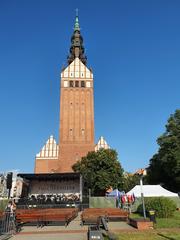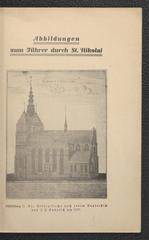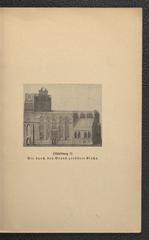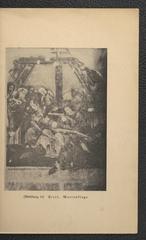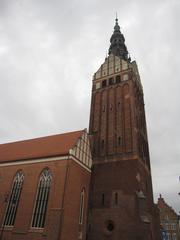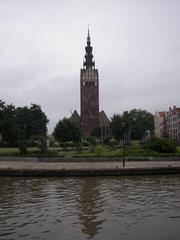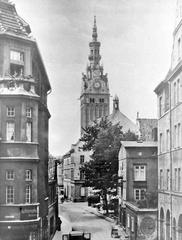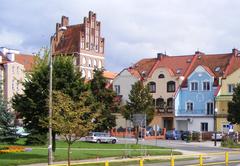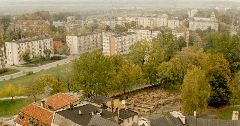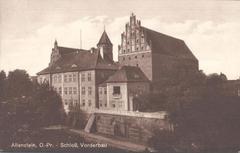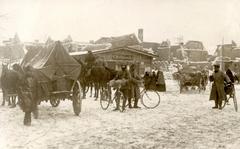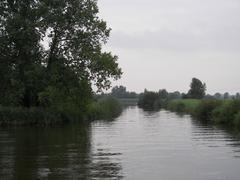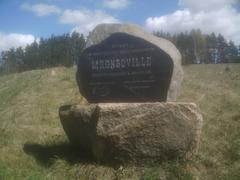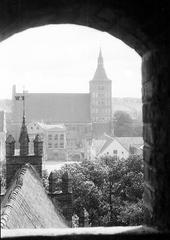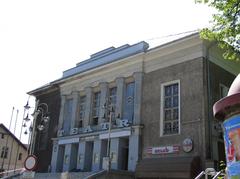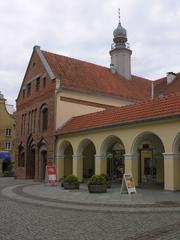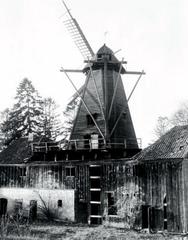
St. Nicholas Cathedral Elbląg: Comprehensive Visiting Guide, Hours, Tickets, and Travel Tips
Date: 15/06/2025
Introduction
St. Nicholas Cathedral in Elbląg stands as a magnificent symbol of the city’s medieval roots, architectural mastery, and enduring spiritual life. Located in the Warmian-Masurian Voivodeship of northern Poland, this iconic Brick Gothic cathedral dates back to the 13th century and has witnessed centuries of transformation, resilience, and cultural evolution. Its nearly 100-meter-high tower dominates Elbląg’s skyline, inviting visitors to discover the rich layers of history, artistry, and community that define this landmark.
Whether you are drawn by its Hanseatic heritage, the splendor of Gothic architecture, or its vibrant religious and cultural activities, St. Nicholas Cathedral offers visitors a rewarding experience. This guide covers everything you need to know for a memorable visit—including hours, tickets, accessibility, interior highlights, nearby attractions, and practical travel tips.
For planning and up-to-date information, consult official and local resources (www.stnicholas-elblag.pl, www.visit-elblag.com, justmovingaround.com, exploreyourlife.eu).
Historical Overview
Origins and Foundation
Founded in 1237 by the Teutonic Knights, Elbląg quickly grew into a key trading city within the Hanseatic League. St. Nicholas Cathedral was established soon after to serve the spiritual needs of merchants and settlers, with its present brick Gothic structure taking shape in the 14th century (try-travel.com).
Architectural Evolution
Brick Gothic Masterpiece
The cathedral exemplifies Brick Gothic architecture, prevalent in the Baltic region, characterized by its use of red brick, pointed arches, ribbed vaults, and a towering structure. Its 97-meter-high tower is the tallest in the region and a defining feature of Elbląg’s skyline (exploreyourlife.eu).
Post-War Reconstruction
Destroyed during World War II, the cathedral underwent meticulous restoration from 1948 to the 1980s. The rebuilt structure retains key Gothic elements, though with a more restrained, minimalist exterior that reflects post-war sensibilities and available resources (justmovingaround.com).
Cultural and Religious Significance
Spiritual Center
Dedicated to St. Nicholas—the patron saint of sailors and merchants—the cathedral reflects Elbląg’s deep maritime traditions. Since its elevation to cathedral status in 1992, it has remained the heart of the Roman Catholic Diocese of Elbląg, hosting daily Mass, sacraments, and major liturgical events.
Resilience and Community Role
St. Nicholas Cathedral has survived fires, wars, religious upheavals, and near-total destruction, symbolizing the resilience of Elbląg’s people. Today, it serves as a vibrant cultural hub, hosting concerts, art exhibitions, and educational events in collaboration with local institutions.
Architectural and Artistic Highlights
Exterior Features
- Gothic Tower: The 97-meter tower offers panoramic views of the city and Vistula Lagoon. Visitors can climb 365 steps to the observation deck for breathtaking vistas (exploreyourlife.eu).
- Brick Facade: The main entrance features a pointed Gothic portal and clean, austere lines—a result of post-war simplification.
- Urban Setting: Centrally located in Elbląg’s Old Town, the cathedral is surrounded by reconstructed medieval tenement houses, Market Gate, and atmospheric streets (Finding Poland).
Interior Features
- Nave and Vaults: The soaring nave with ribbed vaults and tall, pointed windows is less ornate than in the medieval period but retains a sense of grandeur (justmovingaround.com).
- Stained Glass: Restored and modern stained glass windows illuminate the interior with vibrant colors and spiritual motifs.
- Historic Fittings: Highlights include the 14th-century bronze baptismal font, Baroque main altar, and surviving late Gothic altars rescued from other destroyed churches (Rabbit Trans Poland).
- Relics and Chapels: Notable chapels house relics and art dedicated to various saints, including a niche with the reliquary of the Holy Cross (exploreyourlife.eu).
- Pipe Organ: The cathedral’s large organ supports liturgical music and concert performances.
Visitor Information
Visiting Hours
- Monday–Saturday: 9:00 AM – 5:00 PM
- Sunday: 12:00 PM – 5:00 PM
- Note: Hours may vary during religious holidays or special events. Always verify on the official website or by contacting the parish office.
Tickets and Admission
- Cathedral Entry: Free (donations appreciated)
- Tower Access: Modest fee required; tickets available on-site or via the website (reservations recommended during peak seasons)
- Guided Tours: Available in Polish, English, and German. Booking in advance is advised.
Accessibility
- Main Entrance: Wheelchair accessible with ramps. Some interior areas have uneven flooring due to historic construction.
- Tower: Accessible only by stairs (365 steps); not suitable for visitors with mobility challenges.
- Assistance: Available on request. Contact the parish office for specific needs.
Visitor Amenities
- Restrooms: Located nearby.
- Souvenirs: Modest religious souvenirs and guidebooks may be available at the entrance or parish office.
- Multilingual Panels: Interpretive signage in Polish and English is provided.
Experiences and Activities
Climbing the Tower
Ascend the tallest church tower in the region for panoramic city views. The climb is physically demanding but offers unique photo opportunities, especially at sunset (Polskie Szlaki).
Attending Services and Concerts
Visitors are welcome at Mass and special liturgies. The cathedral also hosts organ and choral concerts, particularly during major religious celebrations.
Photography
Photography is permitted without flash. Tripods may be restricted during services or busy periods. Respectful attire is expected—shoulders and knees covered, and hats removed (Try Travel).
Guided Tours
Enhance your visit with a guided tour, offering in-depth insight into the cathedral’s history, architecture, and art (exploreyourlife.eu).
Nearby Attractions and Suggested Itineraries
- Market Gate (Brama Targowa): 14th-century city gate with observation deck.
- Galeria EL: Former Gothic church now serving as a contemporary art center.
- Elbląg Canal: 19th-century engineering marvel, ideal for a boat tour (Wild Trips).
- Museum of Archaeology and History: Offers exhibits on the city’s medieval past.
Combine a visit to the cathedral with these sites for a comprehensive Elbląg heritage experience.
Frequently Asked Questions (FAQ)
Q: What are the visiting hours for St. Nicholas Cathedral?
A: Monday–Saturday: 9:00 AM–5:00 PM; Sunday: 12:00 PM–5:00 PM. Confirm current hours during holidays.
Q: Is there an entry fee?
A: Entry is free; tower access and guided tours may require a modest fee.
Q: Is the cathedral wheelchair accessible?
A: Yes, at the main entrance and nave. The tower is not accessible for wheelchairs.
Q: Can visitors climb the tower?
A: Yes, for a small fee. The climb is via stairs only.
Q: Are guided tours available in English?
A: Yes, especially in peak tourist seasons. Advance booking is recommended.
Practical Tips for Visitors
- Best Times: Weekday mornings are less crowded. Summer months and festival periods are busier.
- Language: Most signage is in Polish with some English. Basic greetings in Polish are appreciated.
- Dress Code: Modest attire is expected, especially during services.
- Facilities: Cafes and restaurants are located nearby in the Old Town.
Visuals and Media
Explore high-quality images, interactive maps, and virtual tours on the cathedral’s official website and local tourism portals. Alt tags such as “St. Nicholas Cathedral Elbląg exterior,” “Brick Gothic architecture Elbląg,” and “Elbląg historical sites map” are recommended for accessibility and SEO.
Further Reading
For in-depth information, visit:
- justmovingaround.com
- exploreyourlife.eu
- try-travel.com
- nl.trip.com
- trek.zone
- Polskie Szlaki
- Finding Poland
- Rabbit Trans Poland
- Wikipedia
- Wild Trips
Conclusion
St. Nicholas Cathedral is much more than a historical monument—it is a living symbol of Elbląg’s resilience, artistry, and faith. Whether you seek panoramic views, sacred art, historical insight, or simply a moment of reflection, the cathedral offers a rich and accessible experience. Plan your visit using the practical information in this guide, and immerse yourself in the heart of Elbląg’s heritage.
For personalized travel tips and guided audio tours, download the Audiala app and follow us on social media for the latest updates.
Sources and Further Reading
- St. Nicholas Cathedral Elbląg: A Historical Gem with Visiting Hours, Tickets, and Visitor Tips, 2023, JustMovingAround
- St. Nicholas Cathedral Elbląg: A Complete Guide to Visiting Hours, Tickets, and Historical Highlights, 2023, ExploreYourLife
- St. Nicholas Cathedral in Elbląg: Visiting Hours, Tickets & Exploring One of Elbląg’s Most Iconic Historical Sites, 2023, Try-Travel
- NL.Trip.com
- Trek Zone
- Polskie Szlaki
- Finding Poland
- Rabbit Trans Poland
- Wikipedia
- Wild Trips
